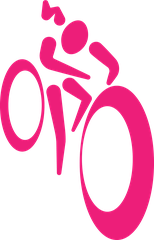Ride Etiquette
Before the ride:
Ensure that your bike is in safe riding condition - we recommend doing an M check before each ride.
Check your helmet age and consider replacing if over 5 years old (replace before this if dropped or crashed).
Carry spare inner tubes, tyre levers and pump.
Pack an extra layer of clothing, especially in winter just in case.
Have an emergency contact system (ie named person contact details, any important medical info) with you. Most smart phones allow you to add emergency contact details to the lockscreen, other examples could be on the back of phone, wrist bracelet, in your saddle bag etc
Carry adequate fuelling - both hydration and food (gels, bars, bananas etc just in case the cafe is closed).
The planned route will generally be shared beforehand to give an idea of distance and elevation. It’s worth downloading this to your cycling computer or smartphone.
Please make sure you arrive in enough time to leave at the time stated on the event page.
If you can no longer make it on the day, please let someone joining the ride know.
Planned rides can be changed at the last minute so check back on the website/Facebook/instagram for any updates.
On the day of the ride, it’s recommended to share phone numbers just in case someone takes a wrong turn and/or ends up lost!
During the ride:
If you are new to group riding you might find these videos on how to ride in a group and signals for group riding useful:
An introduction to how to ride in a group
A more detailed guide to how to communicate as part of a group
Ride two abreast when it’s safe to do so.
Single file around corners and blind bends.
Riding in a group provides aerodynamic advantages and allows several people to share the responsibility of setting a manageable pace on the front, sheltering their riding mates from the wind - a technique known as 'drafting'.
The most efficient formation for a large group is to ride side-by-side in pairs, with riders rotating occasionally and sharing their turn at the front.
Riding in close proximity to other riders can carry hazards though, so be sure to give enough space to manoeuvre, don't overlap the wheel in front and communicate with the rest of the group.
Our rides have a no drop policy i.e. no one is left behind.
Anyone riding ahead of the ride coordinator should wait at any junctions or turnings, especially if they don’t know the route.
If overtaking another rider make sure to leave enough space and worth saying 'on your right' and avoid undertaking on the left.
Verbal communication:
Car front OR Nose, car back OR Tail, slowing, stopping.
The above is most relevant for road and gravel riding but good communication is equally important when mountain biking.
